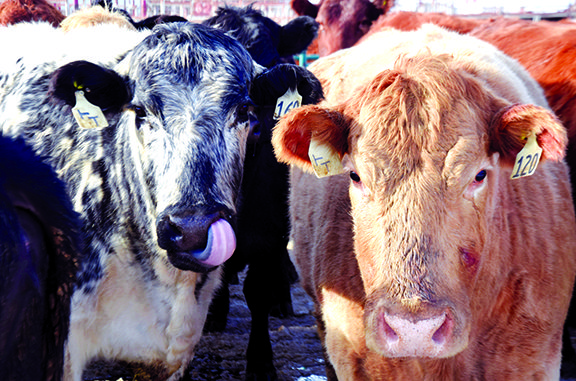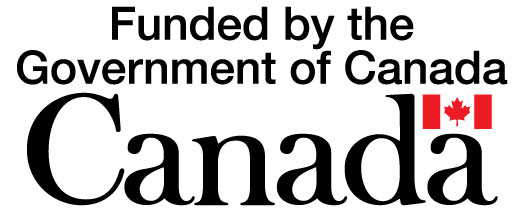Current Temperature
-0.9°C
Cattle producers to face more volatility under potential tariffs
Posted on February 12, 2025 by Taber Times Southern Alberta Newspapers Photo by Collin Gallant. BOVINE WOES: Two cows pose for a picture at the Medicine Hat Feeding Company on Jan. 29 in Medicine Hat.
Southern Alberta Newspapers Photo by Collin Gallant. BOVINE WOES: Two cows pose for a picture at the Medicine Hat Feeding Company on Jan. 29 in Medicine Hat. By Collin Gallant
Southern Alberta Newspapers
Local Journalism Initiative Reporter
Regional cattle producers aren’t sure what might come of U.S. President Donald Trump’s threats to follow through on tariffs on Canadian goods entering the United States.
Several at the Medicine Hat Feeding Company’s sale on Jan. 29 shrugged their shoulders.
But others in the cattle industry say that with record beef prices and shipments slower until the spring, ranchers are in an OK position to weather any fallout until the picture becomes clearer.
“The thing about the tariffs is that you don’t honestly know what might happen,” said Wyatt Stuber, the manager of the auction mart in Medicine Hat. “The market is very volatile right now and at an all-time high.”
“But you’ll feel it as a producer because the basic logic is that a 25 per cent tariff means 25 per cent off your price.”
Trump recently promised to employ blanket-like tariffs on Canadian goods to combat his perceived imbalance with Canada on trade, as well as to force action on border security, but that has since been paused for one month following a last-minute deal between Ottawa and Washington.
About 44 per cent of Canadian beef production is directed to the U.S., much of it from Alberta, but Canadians also import 300,000 feeder cattle per year from its North American Free Trade Agreement partner.
Auctioneer Darren Lutz said he can see the value in Trump’s push to increase border security and even strengthen his own domestic economy, but farm groups in the U.S. have warned about increased food prices and potential fallout from his actions.
“I don’t think he’s about to whack hardworking guys – he’s after the real bad guys and companies that work the system,” said Lutz.
“Those plants (in the U.S.) need Canadian cattle.”
The Alberta Beef Producers recently said the industry top to bottom is bracing for disruption.
The Canadian dollar has weakened against the American counterpart, which helps bolster export income, but hurts bottomline costs on imported feed, equipment and stock.
The Canadian Cattle Association says the highly integrated beef sector in the two countries is a model to be preserved.
“The United States and Canada have the largest two-way trade in live cattle and beef in the world,” said the group’s president Nathan Phinney.
“Tariffs will create significant impacts on both the Canadian and American beef and cattle industries,” on prices, production, trade flows, margins, as well as feedlots, packing plants, trucking, and the rest of the supply chain.
“We can expect an immediate increase in volatility,” he said.
Stuber says a large number of sales in the fall were set in order to see some predictable price on deliveries next spring.
At the same time around the U.S. election – when Trump was extolling tariffs – Stuber expected prices to drop, but they only rose higher.
Last month in Medicine Hat, some 900-pound steers sold for $375 per hundred weight, up about 10 per cent since the autumn, Stuber estimates.
Leave a Reply
You must be logged in to post a comment.

